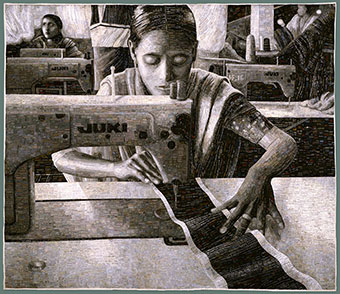Have you seen the film Road to Guantanamo yet? If not then go see it. I have put it off for some time but now that I have – it absolutly terrified me. The story is about four young men who travel to Pakistan. One is about to be married and the others are there to attend.
Through a mix of youthful carelessness, bad luck and the chaos of war they are detained and considered to be members of Al-Qaeda. The brutal treatment and torture they face at the hands of the US military is absolutly barbaric. They are abused and tortured to obtain confessions – something which the military fail to obtain despite their treatment.
Even if they had obtained forced confessions from the men – what are these results worth? They are not the truth. And the treatment makes those carrying it out less human. The US cannot claim to be the “good-guy” anymore. Their brutality does not make them better than any other “evil” torturer which we would condemn elsewhere.
Despite the torture being carried out at Guantanamo and the number of detainees and the number of years they have been held it is important to remember that the US has not achieved one single conviction. It is only brutality without law. To those who want to claim the honour of fighting for their beliefs and country – the actions of the men at Guantanamo put your actions, your country and your armed forces to shame.
See this movie!! It is an important movie about the horror of war, the madness of belief over reason, against the evils of torture and the strength of those who are subjected to evil treatment.
What terrifies me the most is the ability of countries to commit crimes while being able to maintain a rhetoric of peace and humanity…

The movie website contains both the trailer and information about the infamous prison. Amnesty International has a broschure to accompany the film: The Road to Guantanamo Action Guide.
About the detainees at Guantanamo Amnesty International writes:
None of the detainees have been granted prisoner of war status or brought before a â??competent tribunalâ?? to determine his statusâ?¦The US government refuses to clarify their legal status, despite calls from the International Committee of the Red Cross (ICRC) to do so. Instead, the US government labels them â??enemy combatantsâ?? or â??terroristsâ??, flouting their right to be presumed innocent and illegally presuming justification for the denial of many of their most basic human rights.



